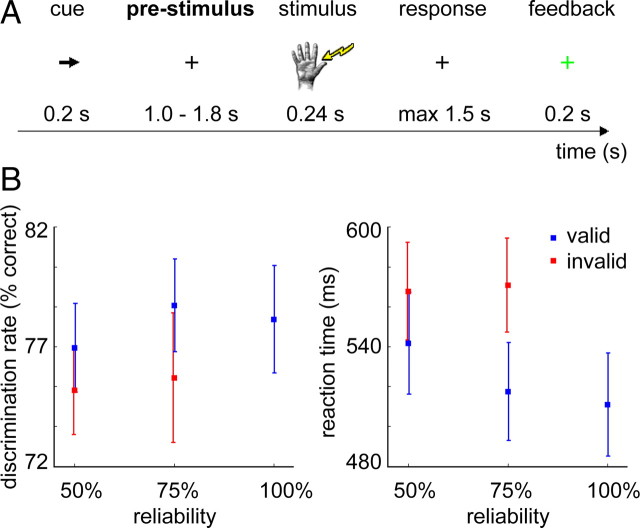Figure 1.
Experimental paradigm and behavioral results. A, Subjects performed a tactile stimulus discrimination task where a visual cue directed attention either to their right or left hand. The strength of attentional modulation was controlled by varying the reliability of the cue in three experimental conditions (100, 75, or 50% valid cueing). Subjects had to discriminate between two target frequencies, presented as electrical pulse trains to the cued thumb on valid cue trials, and to the non-cued thumb on invalid cue trials. B, Discrimination rate (left) and reaction time (right) for each of the experimental conditions, for valid (blue) and invalid cue trials (red) separately. Error bars indicate the SEM. Behavioral performance on invalid trials was significantly worse than on valid trials, both in terms of lower discrimination rate (p < 0.05) and slower RT (p < 0.001). Invalid cues had a more detrimental effect on RT for the 75% condition than for the 50% condition (p < 0.01). Subjects were faster on the 100% condition than on the 75% (p < 0.05) or 50% conditions (p < 0.01).

